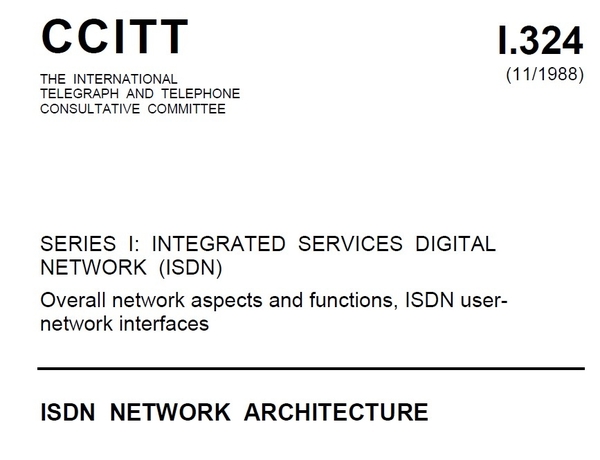


Worldwide companies plan or already executed the ISDN migration to state of the art IP solutions. Most telco’s already for some time stopped the sales of new ISDN subscriptions, while for existing subscribers the service is expected to be terminated in the next couple of years. So, the ISDN migration towards new IP based unified communications concepts is a business reality today.
What are the possible ISDN migration steps for current business customers? We discuss some migration scenarios below. However, it is important to realize that – besides being a challenge – this migration also paves the road for advanced features like enterprise mobility. Let’s have a quick look in this blog.
Until the ‘80s, the PSTN (Public Switched Telephone Network) was the default telecommunications solution for organizations and consumers. PSTN supported analogue voice signal transmission over copper lines between offices and households. Although the access was analogue, it could be used for digital communication (fax, internet) using modem technology. But using a subscriber access line for simultaneous activities like calling and sending data at the same time was something for the far future.

First standards for ISDN were specified in the ’80s
ISDN (Integrated Services Digital network) was the first digital network access service in 1988 and offered combined voice and data services. A so-called basic rate ISDN interface (BRI, for households and small business) provided 2 Bearer channels (B-channels) of 64kb/s and a 16kb/s data channel (D-channel) over a single copper line. This is also referred to as 2B+D. A premium rate interface (ISDN PRI) provided more B channels and one or two D channels, the exact number of ISDN channels dependent on the region. In Europe the so-called E1 carrier supports 30B+2D, in the US the T1 carrier supports 23B+D channels. The different channels can be used for different communications services at the same time. Like a phone call using one B-channel and browsing the internet at another 64kb/s channel.
Since then, we quickly evolved towards broadband access services where even households have an up- and downstream bandwidth of tens or even hundreds of Megabits/s. So, if ISDN was a major technological innovation 30 years ago, it is old-fashioned today. Nevertheless, many households and companies still use ISDN access for their telecommunications needs.
Until now. Nearly all telco service providers rapidly phase out their ISDN services. What does that mean for customers? If you as a company still rely on ISDN services, what are your options? We briefly summarize the options below.
For some customers, ISDN migration means that they don’t have to change their internal communication infrastructure at all. On the contrary, their new external network access finally matches their in-house technology. They already have an on-premise IP based communication solution (e.g. Cisco Unified Communications) but are still connected to the public network via a traditional ISDN BRI or PRI service. ISDN migration for them means that they can remove media gateways and other converting solutions and connect directly to an IP based telecommunications service. For their inhouse communication, there won’t be much impact, but between different locations there may be a more advanced end-to-end feature support.
If companies still deploy traditional ISDN PBX technology, connecting their on-premise network to the IP based services – the typical alternative offered by service providers – can be challenging. Most service providers offer a gateway solution that bridges between their IP network service and traditional ISDN-based PBX solutions. For the short term, this will guarantee business continuity. Still, the question is how long this solution has a positive business case (if there is a positive business case at all). Sooner or later the organization will experience a disconnect from new features and innovations. But also experience a growing Cost of Ownership in a time where IP based communication is typically associated with decreasing cost levels.
So, ISDN migration can trigger organizations to start thinking about the replacement of their existing ISDN PBX technology by a state-of-the-art IP based Unified Communications solution. Although this is a migration project with substantial complexity and costs, it will on the long run provides companies with advanced internal and external communication facilities at lower costs. The main discussion here is however if the customer should choose again for an on-premise solution. Or is ISDN migration also the right moment for cloud migration?
Which brings us to option 4. Many organizations – specifically smaller and medium-sized – should seriously consider this alternative. IP based communications solutions nowadays don’t need on-premise hardware and software anymore. There is no need to deploy own servers with call manager functionality, requiring special skills for systems management. Instead, this functionality can be offered from the cloud and the only on-site technology is a broadband access to the providers IP backbone. And desktop telephones if users don’t want to rely completely on softphones.
Although some parties will start with the relatively easy option 2, on the long run most organizations will migrate to IP based communications solutions, either on-premise or hosted. Important here is that IP base Unified Communications is not just new technology which lowers operational costs and offers some new functionality. Unified Communications revolutionize organizations in two aspects:
It is in this Enterprise Mobility domain that RSconnect adds value. After your migration from ISDN towards IP based Unified Communications, we offer some smart mobility tools, which enrich the baseline Cisco Unified Communications experience:
So, RSconnect software solutions make the use of new Unified Communication functionality more intuitive and user-friendly.
So, your organization migrated (or plans to migrate) from an ISDN PBX to a Cisco IP based communications solution? And you want to simplify the use of e.g. Extension Mobility and Call Forwarding for end-users? Or you are looking for a solution to automatically lock desktop phones and protect personal data? Check our solutions catalogue or contact our sales support representative. We are happy to show you our full suite of solutions.